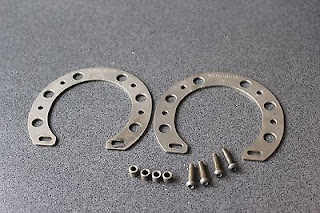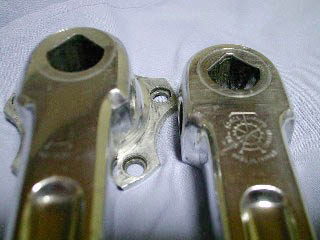If you go to 5, rue Thorigny in the Le Marais section of Paris, you won't find this:
While this piece looks as if it's inspired by Picasso's famous "found object" sculpture, if you want to see it in person, you'll have to go to 1519 West Main Street in Boise, Idaho.
The reason why I say "you'll have to" is that the establishment where you'll go to see it hasn't opened yet. Its owner says, however, that the HandleBar will be up and running by the end of this month.
And while you can't see "Guernica" or "Les Demoiselles d'Avignon" in the Boise bar, it does offer two things la Musee Picasso doesn't: beer, for one. But more important (at least to the audience of this blog), you can park your bike inside the premises. In fact, they'll even let you leave it overnight.
Be careful, though: It might just end up becoming part of the decor. All right, I'm exaggerating a bit: The HandleBar, as the name indicates, will be bike-themed. Not only will bikes and art inspired by them adorn the walls, different fixtures will be made from, or accessorized with, bike parts. For examples, the handles of the beer taps will be wrapped with bicycle chains.
Owner Ezra Jackson is, not surprisingly, a cyclist. And his brother was a racer. He says the idea for HandleBar came to him when he was fixing his bike and "hanging out" with his buddies. They were drinking beer, naturally, and as he says, "having a good time". So, he thought, "Why not make it a little bigger?"
And, yes, customers can work on their bikes in the bar--even if the work stands, um, won't always be used for their intended purposes.
Last time I checked, they didn't have anything like that at Les Deux Magots!
While this piece looks as if it's inspired by Picasso's famous "found object" sculpture, if you want to see it in person, you'll have to go to 1519 West Main Street in Boise, Idaho.
The reason why I say "you'll have to" is that the establishment where you'll go to see it hasn't opened yet. Its owner says, however, that the HandleBar will be up and running by the end of this month.
And while you can't see "Guernica" or "Les Demoiselles d'Avignon" in the Boise bar, it does offer two things la Musee Picasso doesn't: beer, for one. But more important (at least to the audience of this blog), you can park your bike inside the premises. In fact, they'll even let you leave it overnight.
Be careful, though: It might just end up becoming part of the decor. All right, I'm exaggerating a bit: The HandleBar, as the name indicates, will be bike-themed. Not only will bikes and art inspired by them adorn the walls, different fixtures will be made from, or accessorized with, bike parts. For examples, the handles of the beer taps will be wrapped with bicycle chains.
Owner Ezra Jackson is, not surprisingly, a cyclist. And his brother was a racer. He says the idea for HandleBar came to him when he was fixing his bike and "hanging out" with his buddies. They were drinking beer, naturally, and as he says, "having a good time". So, he thought, "Why not make it a little bigger?"
And, yes, customers can work on their bikes in the bar--even if the work stands, um, won't always be used for their intended purposes.
Last time I checked, they didn't have anything like that at Les Deux Magots!






















